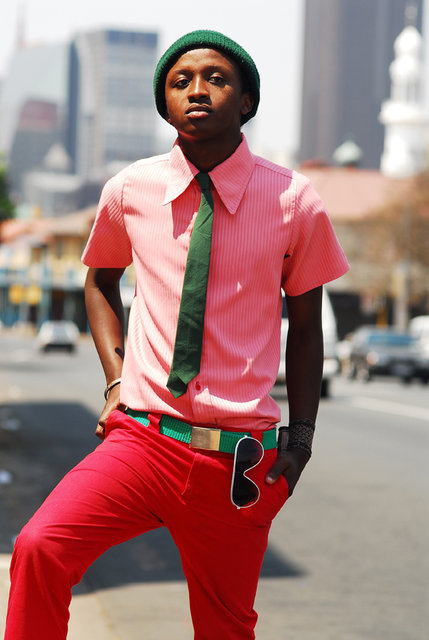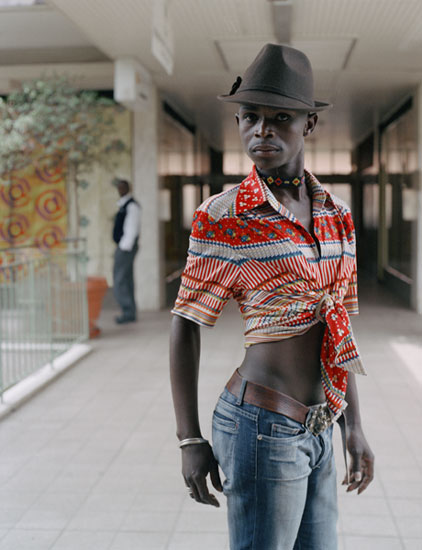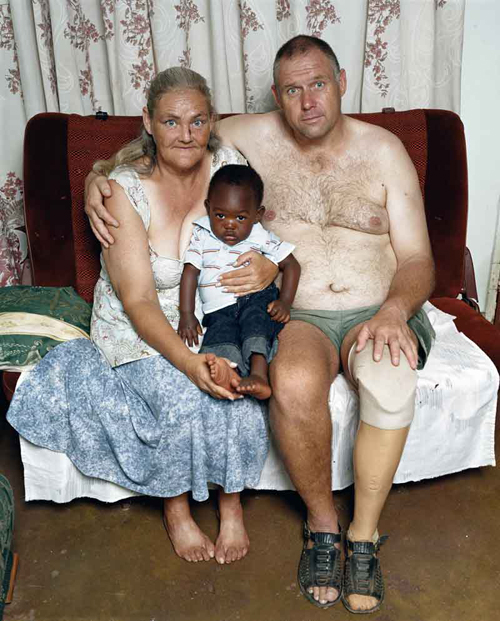Last month, I had the privilege and pleasure of attending a symposium that served roughly as a capstone to one of my graduate courses. The symposium was coordinated in conjunction with the Victoria and Albert Museum’s just recently closed Figures & Fictions show, an exhibition of a range of South African photographic practices. The second term of my course focused on many of the photographers featured in the show, touching on issues of photographic ethics, gender and sexual identity, and the legacies of Apartheid in South Africa, among others. I can hardly count the exhibition and symposium’s timing as an unexpected coincidence – the curator of the exhibition, Tamar Garb, also happens to be the professor of the course I was in.
It’s interesting to see how an art historian’s current research interests shape and are shaped by the courses she teaches; even more so to see those interests presented for a larger public audience. Throughout our course, my classmates and I saw resonances of the post-colonial theory around Orientalist depictions of race and gender we had studied in the first term regarding late 19th-/early 20th-century French portraiture. The juxtaposition of contemporary South African artists, mostly photographers, and western European painters of a century earlier may seem unexpected, but when viewed through a social history-informed lens, certain parallels regarding the power and expectations of truth in representations continue across period and location.
And those questions around the political nature of the assumed truth-value of photographic representation served as the crux of the Figures & Fictions show, as subtly indicated by its alliterative title. The exhibition consisted of the work of seventeen South African photographers from the well established to the emerging. While the photographers’ practices vary greatly in content and intent, the common thread of work included was the depiction of human beings, human bodies as subjects. Some such as David Goldblatt’s Ex-Offenders photos may be commonly identified as documentary practice, and others, like Kudzanai Chiurai’s satirical portraits of fictional African leaders, offer more explicitly constructed or imaginative projects. Others still remain in a grey area between the two, perhaps constructing a dialogue between photographer and photographed. To collect such broad range of representations in one space is to raise questions and challenge the alleged objectivity and presumed narratives of any and all the photographs. Or so I have no choice but to believe, having raised such questions all term long in class with Professor Garb.

Zwelethu Mthethwa, "Untitled," from "The Brave Ones" series, 2010. Mthethwa rallies against being called a documentary photographer.
These issues are far from new within the study of photography, but have an interesting weight in regards to the South African context. South Africa has a long history of photography, particularly struggle photography, some decades long efforts to speak out and make known the sufferings of people living through government-mandated Apartheid. Although opinions vary among photographers as to the status of photography as an artistic medium, photography has long been viewed as a vehicle for change, a tool in the struggle to take control and shape representations and, thus, the lives of those represented.
The two-day symposium, entitled “The Ethics and Poetics of Photographic Depictions of People,” brought together a number of imminent art historians and philosophers, including Achille Mbembe, who was the keynote speaker. The idea of the archive, used in a variety of contexts, however nebulously, was an oft-recurring theme, which speaks to the debatable idea of photograph as document. During discussion periods, the issue of whether post-Apartheid as an accurate term was also repeatedly brought up – usually in reference to the post-Apartheid moment as a continually on-going process, rather than a specific moment past. One of the heaviest looming questions was that regarding the usefulness of racial categories as a lens to consider aesthetics, and perhaps the need to reconsider the vagaries of racial identification. One suggestion, made by Sarah Nuttall in her closing reflections, was that perhaps those in South Africa may begin aesthetically addressing the multiplicities of identity within singular categories, much like the 1980s development of Black British artists handling complex identities in filmic quasi-documentary practice. Ashraf Jamal’s paper on photographer Billy Monk provided a contentious alternative to considerations of race, longing for analyses more imaginative and less constrained by categorizing ideologies. Christopher Pinney brought up Bruno Latour’s idea of the iconoclash, or the contemporary paradoxes of representation, which was particularly resonant. Other postmodern and post-structural concerns were a part of these conversations: issues endemic to globalization and how images are circulated; the fragmentation of the real, and of identity; community membership and the ethics of insider/outsider statuses; the anxieties of the growing trend of the Afropolitan, among others. By the end of the second day, we were flooded with concepts and pressed for time to properly sort them all out.
Ultimately, the symposium was not merely about the question of the social function of photography, but rather, how that social function changes across generations and politics. As its social function has changed into a multiplicity of functions, is it then anachronistic to claim a higher political function than other media? As evidence mounts that the task of truth-telling of various communities is an impossible one, the consequences of past efforts remain. As much as we might need one to rectify lingering imbalances, is there such thing as a more perfect political representation? These are ideas inherent to that of identity politics, which seem to have come and gone out of favor in the American context largely during the 1990s, but what’s at stake remains, particularly for younger generations. New contexts and changed contexts mean changed identities, and changed identity politics.

Nontsikelelo Veleko, "Kepi," 2006. Nontsikelelo "Lolo" Veleko's street photography demonstrates the vibrancy of self-expression in South African youth culture.
I am curious as to how these concerns played out within the general Figures & Fictions viewing public. The juxtaposition of the photographs exhibited lends itself to challenging photographic practices as existing within fixed categories that come out of asking “what do the Essop brothers’ carefully constructed self-portraits have to do with Jo Ratcliffe’s conflict-ravaged borderland shots?” When Professor Garb gave our class a post-term cursory tour of the exhibition, her explanations felt a little like they were glossing over the larger issues, but the truth was that our class had been an extensively detailed preamble to the show. But for the viewers who hadn’t had an extended period of study, or at least access to a panel of pertinent scholars, was the exhibition – like so many others – just an open-ended starting point? As someone who had all those opportunities, I don’t feel like I have any concrete answers to the questions raised in the exhibition, just more informed questions and reconciliations.
In the end, it’s another sharp reminder of how short my program, as with any class, really is: there is always so much more that you don’t cover, that you’re still grasping for. Observing the process was enlightening, intellectually and personally: from my perspective as a student, I got to hear a number of perspectives at the active forum of the symposium, a nice supplement to seeing the works we had studied in class in person at the museum. With these experiences at hand, I could see where Professor Garb had come from and what she was still processing. She occasionally gave us some brief insights on her curatorial process, particularly regarding the artists she was less familiar with whom she felt compelled to include, as well as the practices she still was wrestling with intellectually and politically but that remained important to for her to include to provide a greater breadth of perspectives. These three platforms – curatorial project, classroom, symposium – each served as thorough, open books with pages yet to be written and revised. In the end, I suppose art history remains constantly in process.






